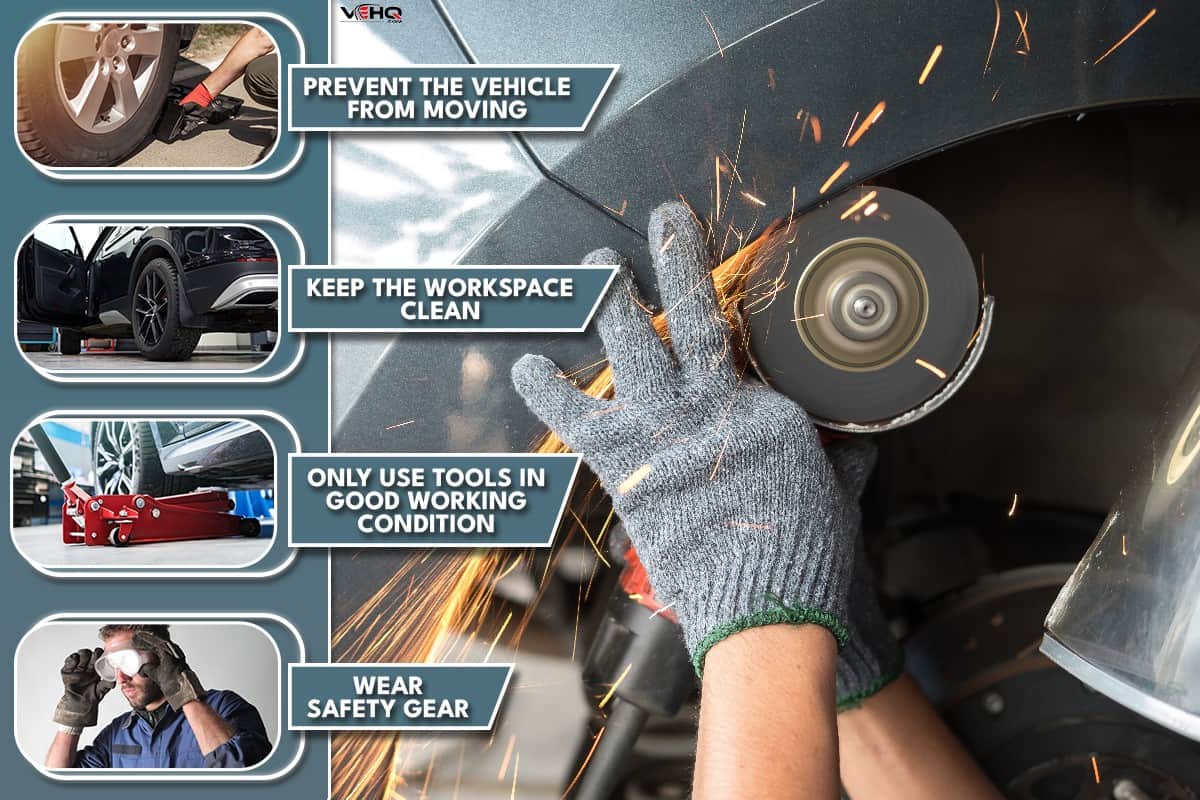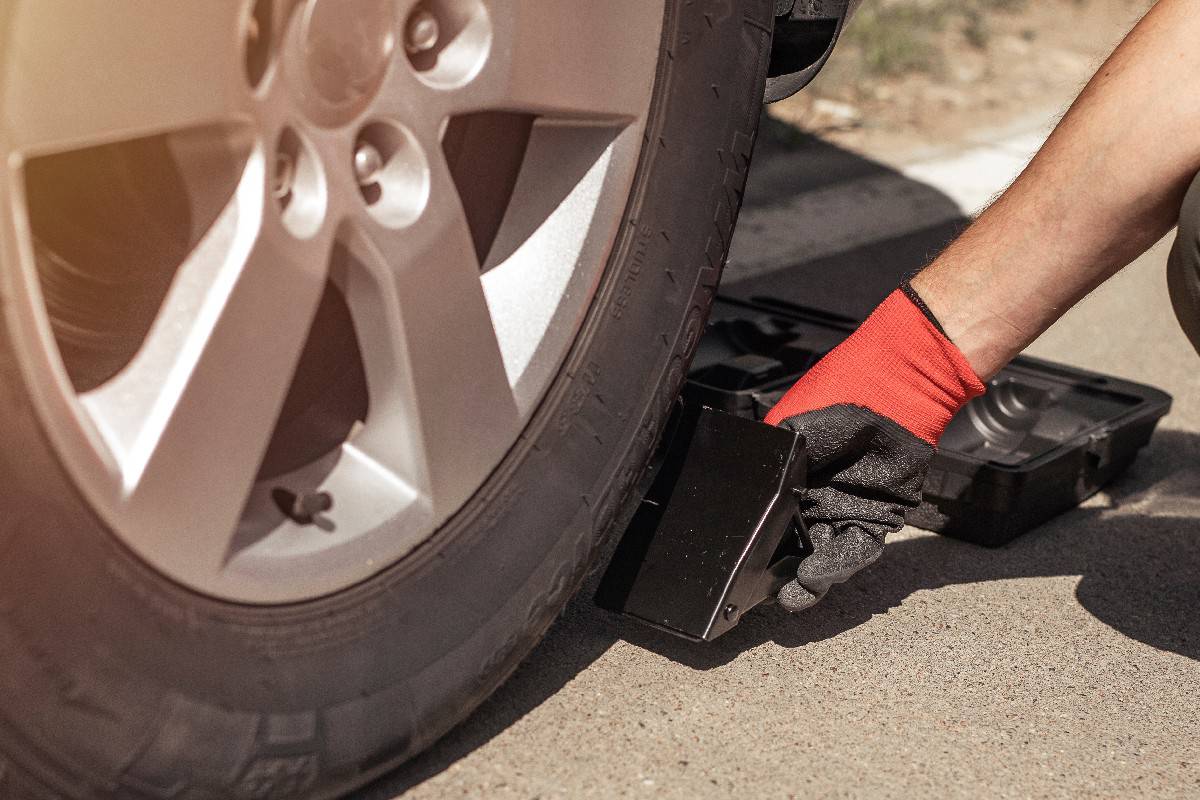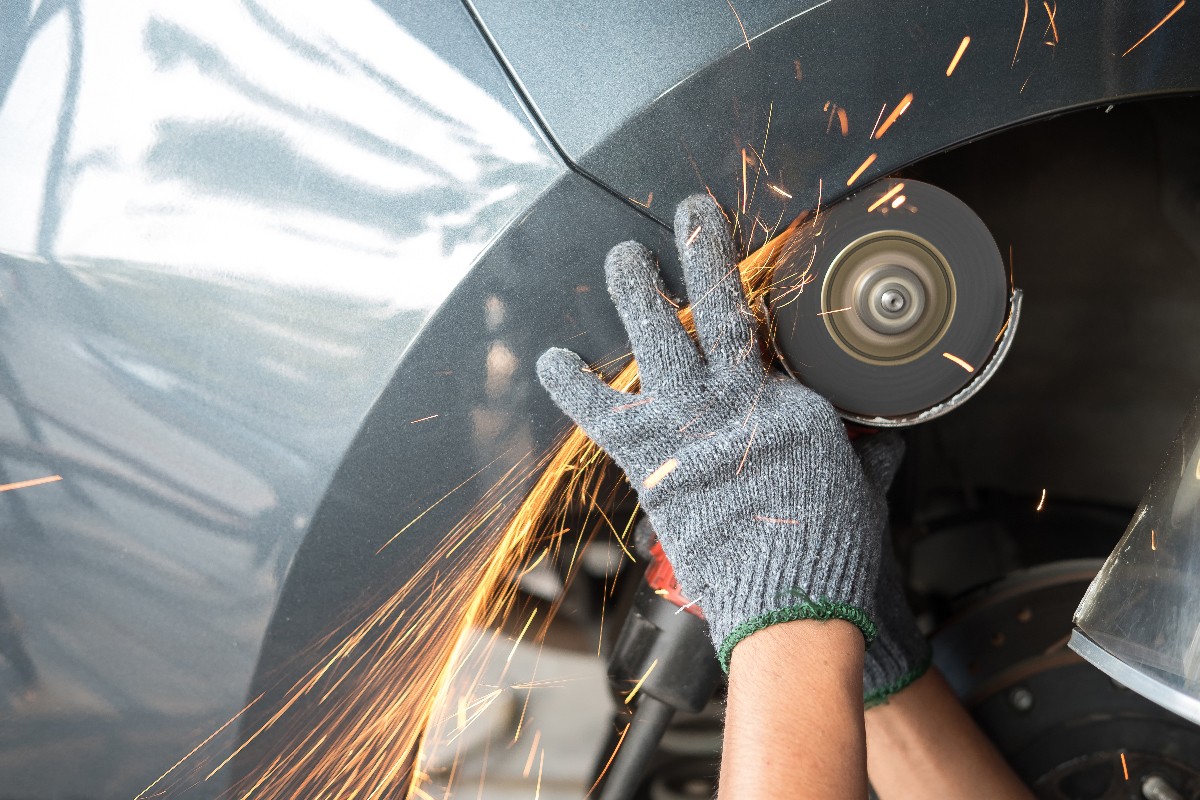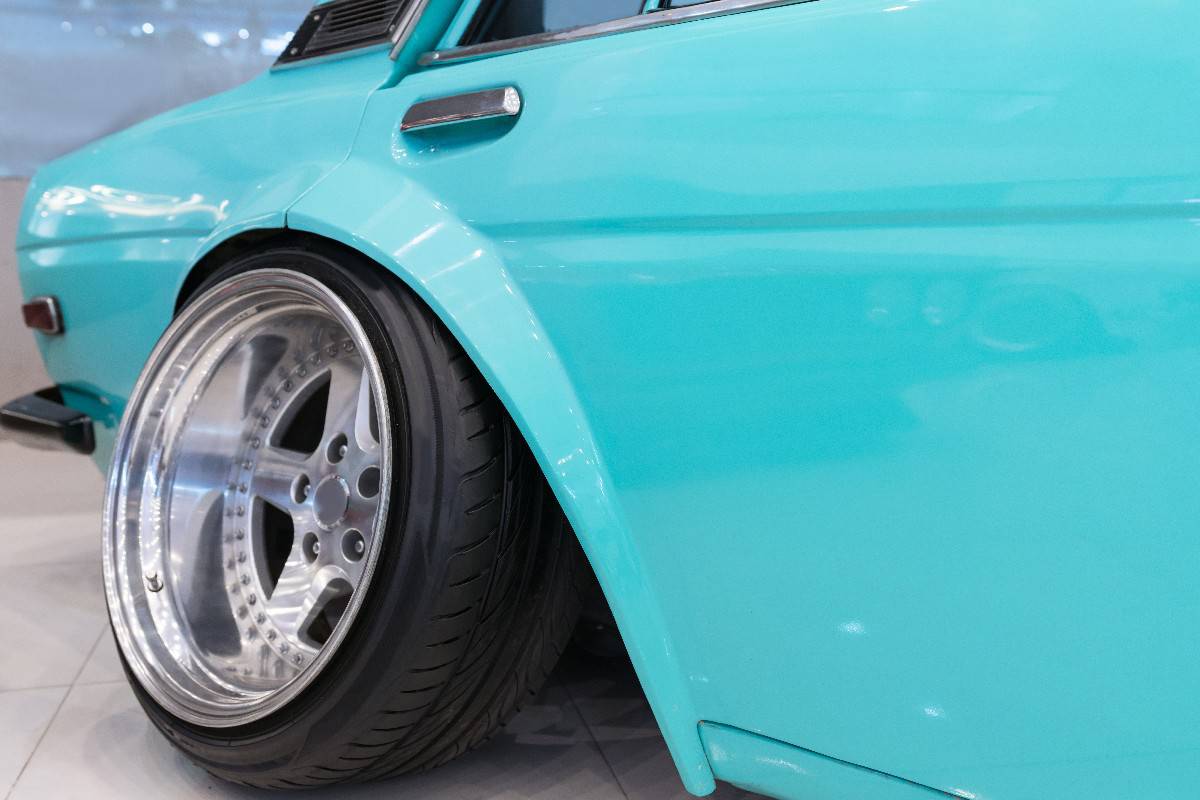You’re about to install the large tires you bought for your vehicle. But you need to trim your fenders to accommodate the size of the new tires. So how can you complete this procedure? We researched this topic for your convenience, and here’s what we found.
First, prepare for the upcoming project by ensuring your safety. Next, gather all the necessary equipment and materials. Proceed by following these steps after completing the necessary preparations:
- Measure the trim
- Remove the old wheel
- Cut the fender
- Install the new wheel
You might think that this is a relatively straightforward job, but it's important to pay attention to details so that you don't make mistakes. Continue reading as we talk about this process in greater detail.
Safety Precautions When Cutting Fenders

Following preventive measures can help reduce accidents and injuries while you’re cutting your vehicle’s fenders. Some precautionary methods to observe are:
Prevent The Vehicle From Moving

The vehicle may move out of its parking spot while you’re working on its fenders. You can stop this from happening by placing chocks on the grounded wheels. Also, you should engage the hand or parking brake.
Keep The Workspace Clean
A messy workstation can be hazardous. Don’t leave your tools and other pieces of equipment lying around near the job site. Instead, store those items immediately after you finish using them.
Only Use Tools In Good Working Condition
Inspect your tools before you use them. You should replace any items that might increase the risks of onsite accidents and injuries. For example, a worn floor jack might bend or break while carrying the weight of your vehicle.
Tip: You can also use jack stands while you’re working with the floor jack to further improve your safety.
Check out these jack stands on Amazon.
Wear Safety Gear
Despite adding safety measures to your surroundings, don’t forget to equip yourself with the right protective gear. Goggles, gloves, and long-sleeved clothing can reduce direct contact with potentially harmful components.
Check out these protective glasses on Amazon.
What You Need
- Floor jack
- Marking tool
- Lug wrench
- Angle grinder
- Cutoff attachment
- New tire set
DIY Instructions For Cutting Fenders

Take note that the exact process to cut fenders often differs for each specific vehicle and fender model. Some of the steps highlighted in this post may or may not apply to your particular fender-trimming procedure.
You can read our post on car fenders to learn more about those components. That link also shows the differences between fenders and bumpers.
Here are the steps for cutting your vehicle's fenders to give you a general idea of how to complete this procedure:
Step #1: Measure The Trim
Use a measuring tape to figure out the amount of fender material you need to remove. Mark the locations you need to cut with a pen, chalk, or marker. You can also document the recorded measurements to reduce the risks of errors.
Tip: You can use the existing fender flare as a guide to measuring the amount of fender flare material to cut.
Step #2: Remove The Old Wheel
Use a floor jack to raise the side of the vehicle with the fender you're cutting. Then loosen the wheel’s lug nuts before pulling out the wheel assembly. Set the wheel aside or dispose of it properly.
Tip: Watch the video below if you’re having trouble removing your wheel.
Step #3: Cut The Fender
Use an angle grinder with a cutoff wheel attachment to trim the fender. Make sure you don't push the power tool into the vehicle. Otherwise, you might cut other parts, leading to additional repair costs.
Step #4: Install The New Tires
With the fender material now trimmed, install the new tire to its mount. Next, secure its lug nuts before lowering the vehicle to the ground.
Note: Make sure to work with one fender at a time. Ensure that you complete the steps mentioned above for one fender and wheel assembly before moving to the next.
Check out this angle grinder kit on Amazon.
You can also watch the video below to gain additional insights into this procedure.
If you’re curious about learning other solutions to prevent the tires from rubbing on the fenders, check out our post on that topic.
How Do You Roll A Fender?

Fender rolling is the process of flattening the fender’s lip. This procedure should promote additional space between the fender and the tire. Plus, rolling may also prevent dangers caused by the sharp edge of a cut fender.
So follow these general DIY steps after you complete the fender-cutting procedure:
Things You’ll Need
- Wooden baseball bat
- Heat gun
- Floor jack
Step-By-Step Guide
- Turn off your vehicle’s engine and chock the wheels.
- Engage the hand or parking brake, and set the vehicle to neutral or the first gear.
- Chock the wheels to prevent the vehicle from moving from your workstation.
- Raise the vehicle with the floor jack.
- Wedge the wooden bat between the flare and the tire.
- Use the heat gun to increase the temperature to the location of the fender that’s nearest to the baseball bat.
- Roll the baseball hat slightly to reform the fender’s shape.
- Raise the vehicle with the floor jack if you need additional clearance between the fender and the tire.
- Repeat steps 5 to 8 until you roll the entire fender.
Note: You can also use a fender roller tool for this job. But taking advantage of the steps highlighted in this section may help you save the extra cash from buying the extra equipment.
Check out this fender roller tool on Amazon.
Watch the video below if you need a visual representation of the steps mentioned above.
How Much Space Is Needed Between A Tire And A Fender?
The minimum clearance between your new tire and the vehicle’s fender is three inches. But take note that each vehicle and tire have specific clearance requirements.
You can measure the distance between the axle's top and the frame's bottom to gain an accurate measurement of your clearance needs.
Do You Have To Cut Fenders For Fender Flares?
Many fender flares don’t require any cutting or modifications done to the fenders. These models often come with pre-drilled holes and/or fasteners for relatively easy installation procedures.
However, compatibility still plays a role in choosing the correct fender flare. In other words, it can be tough or impossible to fit a specific fender flare meant for a GMC Sierra 1500 to a Ford F-150.
Check out these fender flares on Amazon.
How Much Does It Cost To Trim Fenders?
Professional automotive services may charge you anywhere from $5 to $450 to cut your vehicle’s fenders. Certain factors can affect the final expenses for the expert assistance, such as the difficulty of the job and the number of fenders to cut.
Will Changing Tires Void The Warranty?
It depends. Changing old tires for new models doesn’t usually void the vehicle’s warranty. On the other hand, replacing tires while modifying the vehicle to accommodate the new installation may cancel the coverage.
Is There An Advantage To Bigger Tires?

Replacing your vehicle’s tires with bigger ones can promote different benefits. Some of these possible advantages are:
Enhanced Control
Attaching bigger tires may lead to improved contact between your vehicle and the ground. Larger tires may also bring stiffer sidewalls and wider threads.
These additional features deliver enhanced cornering and handling for different road conditions.
Upgraded Grip And Traction
Generally, larger tires mean more rubber meeting the ground. This additional material may help prevent the vehicle from skidding, particularly on slippery terrain.
Improved Braking Performance

Increasing the size of your vehicle’s tires may also help reduce the distance needed for the brakes to activate. So you may notice a faster-than-usual response time for your brakes to stop your vehicle.
Bear in mind that installing bigger tires also has possible drawbacks. For instance, the larger size may result in the engine working harder than normal to move the vehicle. This scenario might lead to a reduction in your vehicle’s fuel economy.
Also, changing your tires' size for larger models may have a learning curve. In other words, you may need to relearn some aspects of your driving your vehicle.
Final Thoughts
Remember, cutting fenders to let your vehicle accommodate bigger tires often requires accuracy and patience. Take the necessary time in going through the steps in this post. Otherwise, you can pay professionals to trim the fenders for you.





